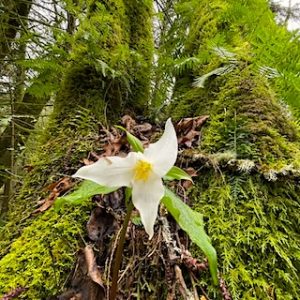 The Columbia City Yoga on-line Moving into Meditation class met this morning. We explored how our ability to be with what is – our patience – can help us in our struggles. It is a slow process of cultivating loving awareness around what needs healing. Slow time in loving awareness can help the heart to open and the mind to clear.
The Columbia City Yoga on-line Moving into Meditation class met this morning. We explored how our ability to be with what is – our patience – can help us in our struggles. It is a slow process of cultivating loving awareness around what needs healing. Slow time in loving awareness can help the heart to open and the mind to clear.
We continued to draw from Oren Jay Sofer’s book: Your Heart Was Made for This: Contemplative Practices for Meeting a World in Crisis with Courage, Integrity, and Love. Oren writes about patience as a practice of being with the heart of our struggles. We do this by recognizing reactivity or tension. We then create the conditions that will allow us the space and time needed to move toward clarity and healing.
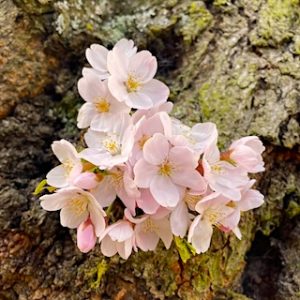 We heard Rosemerry Wahtola Trommer’s poem, Lumbricus patentia. Rosemerry offers many of her poems and writings on her web-site A hundred Falling Veils. On a troubled day, Rosemerry wants to be like an earthworm giving itself over to the tunneling motions of creating more space. She yearns for the constancy and slow time the heart needs to open. Patiently being with what needs tending.
We heard Rosemerry Wahtola Trommer’s poem, Lumbricus patentia. Rosemerry offers many of her poems and writings on her web-site A hundred Falling Veils. On a troubled day, Rosemerry wants to be like an earthworm giving itself over to the tunneling motions of creating more space. She yearns for the constancy and slow time the heart needs to open. Patiently being with what needs tending.
Guided Reflection Last week we explored ways of finding ease while caring for those in our web of being. Our calm and caring presence can be a source of healing. It begins by finding the still point in our thoughts, words and deeds. Finding the still point of being. Frank Ostaseski describes this as a practice of “finding a place of rest in the middle of things.” Sometimes it’s hard to find a place of rest in one’s own heart. I think these are the times that call for patience.
Last week we explored ways of finding ease while caring for those in our web of being. Our calm and caring presence can be a source of healing. It begins by finding the still point in our thoughts, words and deeds. Finding the still point of being. Frank Ostaseski describes this as a practice of “finding a place of rest in the middle of things.” Sometimes it’s hard to find a place of rest in one’s own heart. I think these are the times that call for patience.
In his book, Your Heart Was Made for This, Oren Jay Sofer writes:
. . . Patience works at the level of our tension and reactivity to life, easing the heart with spaciousness. . . . It transforms the heart by relinquishing impatience and clinging, and it sustains us to move . . . toward more health and wholeness.
In speaking of his own struggles with chronic illness he recalls:
I was able to hear the message: you can’t rush healing. Healing requires loving attention, care and understanding and space to breathe. . . .
He describes the process in two stages:
 First we must recognize the injury. We can spend years – even a lifetime – avoiding pain, burying it, running away from it. Only when we turn toward the hurt and acknowledge it do we open the door to healing and transformation.
First we must recognize the injury. We can spend years – even a lifetime – avoiding pain, burying it, running away from it. Only when we turn toward the hurt and acknowledge it do we open the door to healing and transformation.
Next we do our best to create supportive conditions. . . . we nourish it and wait. Just as our cells know how to mend, our hearts heal, open and recollect their wholeness with the right support.
Our practice offers us the opportunity to cultivate supportive conditions. We learn to create an allowing space in which to be with what is true for us. Oren goes on to say that:
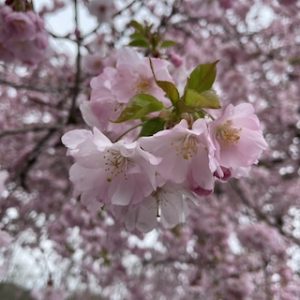 The world patience comes from the Latin patientia, meaning “suffering.” Patience creates space to understand suffering: witness how resisting your direct experience creates struggle. Hold your attention at the point of contact, softening and widening, until the heart concedes its argument with reality. Notice the relief of letting go, even a little. Once the wave of reactivity has softened, you can attend to the unpleasant circumstances with more clarity, choosing if or how to engage.
The world patience comes from the Latin patientia, meaning “suffering.” Patience creates space to understand suffering: witness how resisting your direct experience creates struggle. Hold your attention at the point of contact, softening and widening, until the heart concedes its argument with reality. Notice the relief of letting go, even a little. Once the wave of reactivity has softened, you can attend to the unpleasant circumstances with more clarity, choosing if or how to engage.
I resonate with the idea of holding “attention at the point of contact, softening and widening” space around our tender struggles. I appreciate that this process is one that is moving and relational. It is embedded in the greater web of life. Oren reminds us:
A flower blooms in its own time. . . It opens naturally in accordance with conditions. Here patience relies on wisdom, which understands that all things unfold due to causes and conditions.
This brings me to Rosemerry Wahtola Trommer’s poem about the humble earth worm, Lumbricus terrestrial:
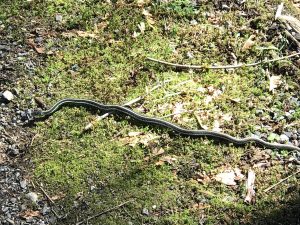 On a day when the world is weighty,
On a day when the world is weighty,
dark and dense with need,
I want to be the earthworm
that gives itself over to tunneling,
its every movement an act
of bringing spaciousness.
And when minutes feel crushed by urgency,
I want to meet the world wormlike,
which is to say grounded,
consistent, even slow.
No matter how desperate the situation,
the worm does not tunnel faster
nor burrow more.
It knows it can take decades
to build fine soil.
To whatever is compacted,
the worm offers its good worm work,
quietly bringing porosity
to what is trodden, compressed.
 So often, in my rush to repair,
So often, in my rush to repair,
I end up exhausted.
Let my gift to the world be
my constancy, a devotion to openness,
my willingness to be with what is.
Let my gift to myself be patience
as I tend what is dense and dark.
Let us give ourselves the gift of patience. Let our practice help us to offer the world our “constancy, devotion to openness and the willingness to be with what is.”
I invite you to give yourself over to the support of the Earth. Feel your body. Sense yourself being here. Sense each passing moment. Being present with the experience of being just as it is. Noticing any mind states. Thoughts. Feelings. Sensations. If it’s comfortable, let your mind land on breathing or stay with the experience of being. Becoming aware of currents, pulses, glimmerings, expanding, relaxing. Abiding. Being.
 In stillness you might attune to the denser, earthier, mineral expressions of body. You might feel how your body and Earth’s body are meeting. Like the humble Lumbricus meeting the world grounded, consistent, slow. Every breath an act of bringing spaciousness.
In stillness you might attune to the denser, earthier, mineral expressions of body. You might feel how your body and Earth’s body are meeting. Like the humble Lumbricus meeting the world grounded, consistent, slow. Every breath an act of bringing spaciousness.
What is it like to experience the elemental space of being? I invite you to move your attention to your eyes. Relax your eyes. Then move to the area under your nose where you feel breathing in, breathing out. Finally move your attention to your heart. As you rest, I invite you to reflect on what may be surfacing. You might silently acknowledge an inner feeling or need, a tender sensation. You can be aware of body breathing and be with what is. See if patience can create the space for you to be with even the slightest contracture, reactivity or struggle. Hold your attention at the point of contact, softening and widening, softening and widening, until the heart releases. Invite the heart to be at peace. You might notice the relief of letting go, even a little.
Notice the quality of awareness in this space. Can it be gentle and clear? Relaxing again and again: your head and neck, upper back and shoulders. Let this relaxation permeate your body. In this calm relaxed space you might inquire: “What most wants attention?” You might go inside the place of deep feeling or vulnerability and ask “What do you most need? How do you want me to be with you?” There’s no need to rush to repair. Now is a time to rest in the space of patience. No matter the urgency there’s no need to tunnel faster or burrow more. Give yourself time.
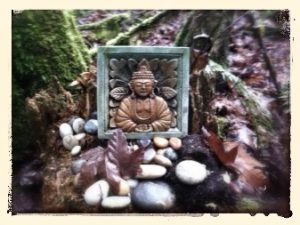 As you sense what is needed, you might offer yourself a kindness, a wise message. You might tenderly placing your hand on your heart. Sense that you are befriending yourself. Allow these nurturing moments to have a real sense of intimacy and kindness. As you receive this kind presence, simply rest in presence. Rest in this spacious, calm, abiding awareness. Natural, loving awareness. May we let this constancy, this devotion to openness and our willingness to be with what is be our gift to the world.
As you sense what is needed, you might offer yourself a kindness, a wise message. You might tenderly placing your hand on your heart. Sense that you are befriending yourself. Allow these nurturing moments to have a real sense of intimacy and kindness. As you receive this kind presence, simply rest in presence. Rest in this spacious, calm, abiding awareness. Natural, loving awareness. May we let this constancy, this devotion to openness and our willingness to be with what is be our gift to the world.
